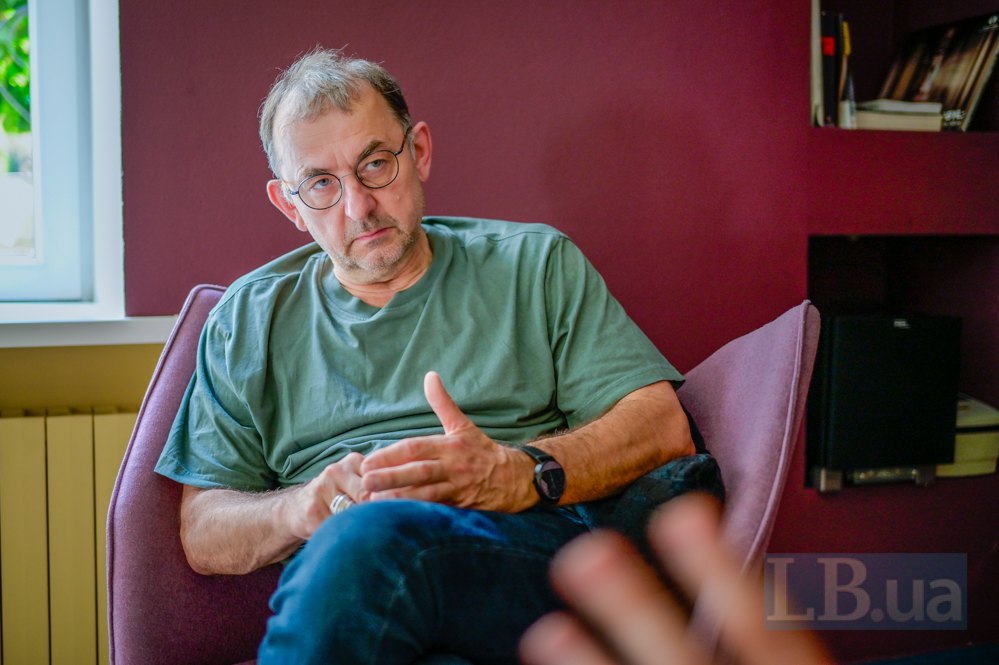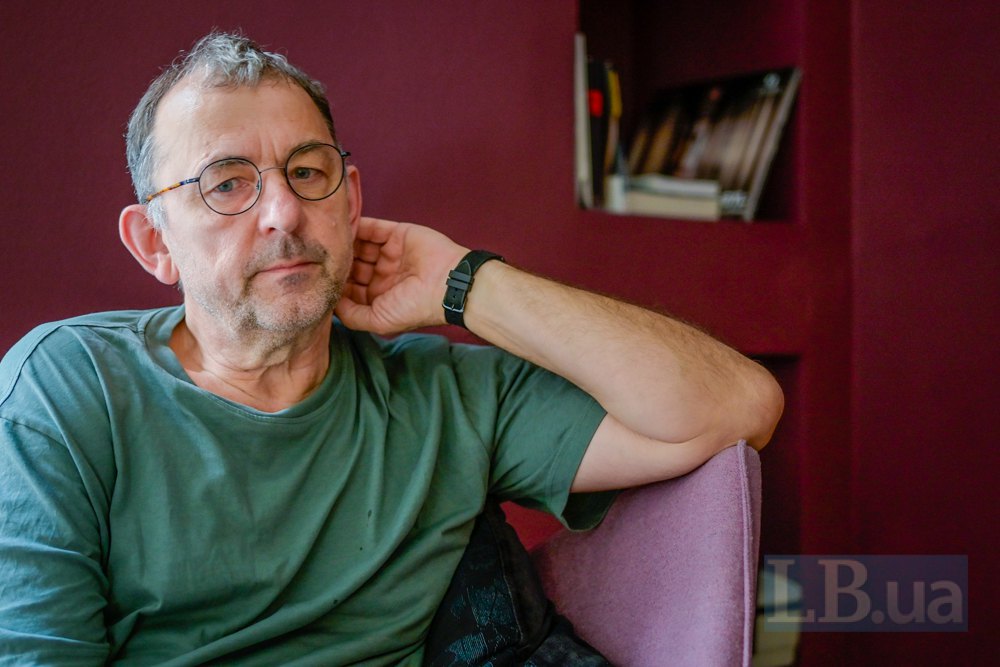
"I'm lucky: I've lived all over Ukraine, I've seen it in different ways"
You have just arrived from Kharkiv, where you live and work despite the terrible shelling. Tell us how the city has changed. The city, like the country as a whole, is going through major transformations, population movements - now the west and east are mixed, and this obviously affects both culture and everyday life.
It seems to me that the state should have done this mixing artificially a long time ago. We had to bring people [from different regions] to each other. I remember the first officially organised exchange of art exhibitions between Kharkiv and Lviv. In the mid-2000s, through the Ukrainian Union of Artists. And it's a bureaucratic structure, and it's half-dead, so there was a lot of fancy fancy with the uninteresting at these exhibitions.
Are you the member of the Union?
Since 1988. But the only thing that connects me to it is the workshop I rent. I would love to privatise it, but it's impossible because it's the property of a non-governmental organisation.
Yes, it's a big problem that we had a lot of people from the west who had never been to the east, and vice versa. I was lucky in this respect: my family came to Ukraine when I was three years old. My parents were doctors, we settled in Rivne, and I went to school there. Then my father wrote his dissertation, and we moved to Kyiv, where I finished the third grade. After defending my dissertation, my father was offered a place at the department of the Simferopol Medical Institute, and we ended up in Crimea. I graduated from an art school there and then went to Kharkiv to study at the institute. I lived all over Ukraine, saw it in different ways.

Did you have a Russian-speaking family?
Yes, I'm not ethnically Ukrainian, but the language issue was resolved very simply. Back in Rivne, my father - he was the head of the hospital department - told the staff: I speak Russian, but you should address me only in Ukrainian. And within two years, he was speaking Ukrainian to his patients. When I went to school, my father was asked if I would learn Ukrainian - it was an option. And my father said yes, of course he would. He generally understood the importance of knowing different languages, and I owe it to him that I now speak both English and Italian. And I learnt Ukrainian through Nestayko - his books had just appeared and I read them endlessly. That was the end of the matter: one talented children's writer solved the problem of the entire Ministry of Education.
Then in Kharkiv, I found myself in a completely Russian-speaking environment. I had literally two friends with whom I spoke Ukrainian. But look - this Russian-speaking Kharkiv is suffering the most, they keep shooting at it. The Russians were much more angry with us than with the 'Benderites' from Lviv, because they thought that because of our Russian-speaking they were 'ours! And we gave them the middle finger. So language is a very important thing, but it is not the only and maybe not even the most important marker of identity. The same is perhaps even more true of Odesa. Because at least Kharkiv was founded by ethnic Ukrainians, and Odesa was an imperial city.
But has Kharkiv changed now?
Yes. Now, for example, everywhere you go in shops, people answer you in Ukrainian, even with an accent, but they try. There is also more Ukrainian in the subway and on the streets, but most people still speak Russian among themselves.
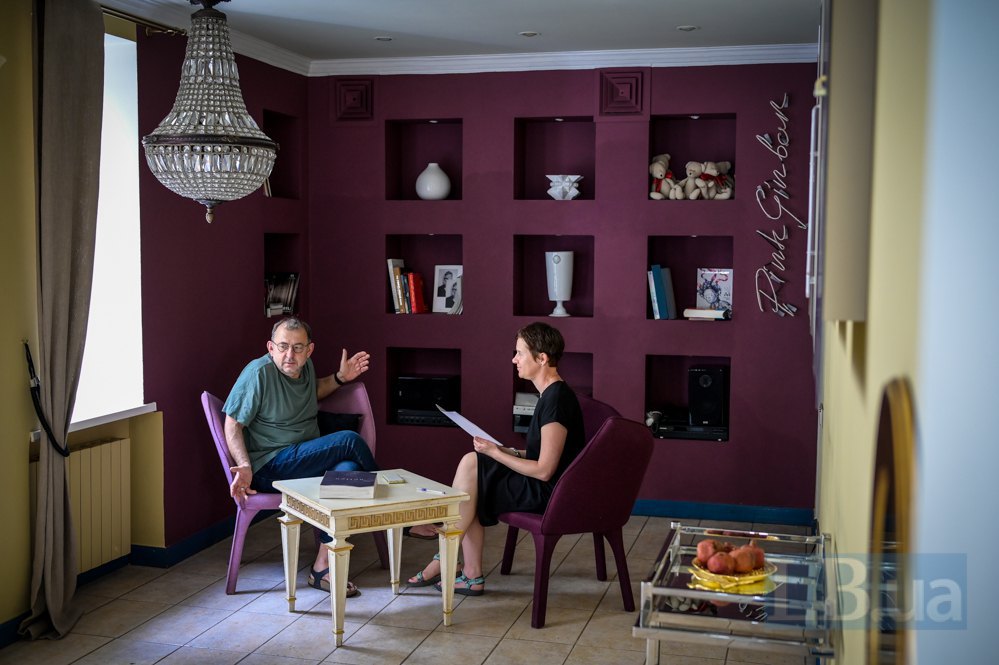
The people themselves have changed, but the composition of the population has also changed. As far as I understand, there are now more than a million people in Kharkiv again, and many have moved from villages and towns around it.
This is true, and these changes are felt both socially and intellectually. For example, there were a lot of IT people in Kharkiv - they have almost all left and are unlikely to return. I absolutely do not want to segregate or devalue the people who have come to replace them, but they are objectively people with a different level of education. Unfortunately, Kharkiv is now losing the remnants of the identity that the Soviet Union had been destroying for years.
I don't want to oppose the east and the west, because the west has experienced its own terrible things. But in the West, people somehow don't really understand that the East was just as militant, it's just that from 1917 to 1937, all this militancy was destroyed. There were a thousand uprisings in 10 years, and the authorities could not cope with these peasants, so they started the Holodomor, destroying the mentality of a free person. And because of this, later it was the West that became the lighter that ignited the Revolution on Granite, the Orange Revolution. Because they had grandmothers who remembered a different reality and could talk about it - and there was no such thing here.
Perhaps a new identity is emerging now? Is it different, but not worse?
Perhaps. Any crisis is a reason to become better. And I must say that my personal attitude towards Kharkiv has changed for the better over the past two years. I was very fond of him in the 1990s, all my work and themes were connected to him. Later, in the 2010s, I began to lose interest in him, especially when all these Dobkin Kernes(ex-mayors) came to power.
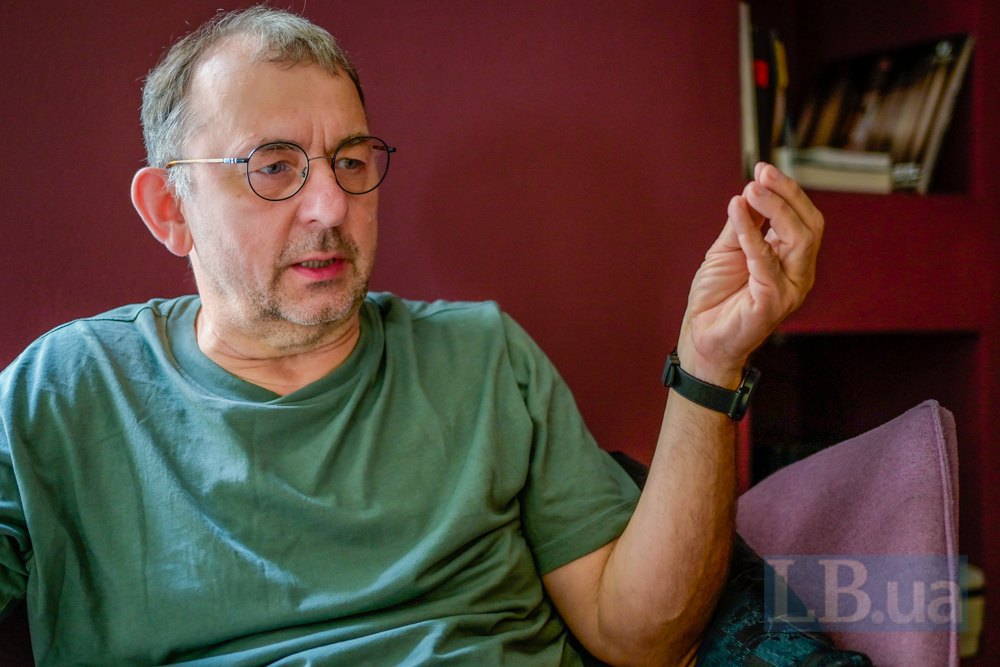
"If I were to demolish monuments according to the principle of imperial markers, in Kharkiv I would start with the monument to Shevchenko"
It was in the 2010s that you started your series Bashta.Mriya about the Barabashovo market, which you described as a symbol of Kharkiv. Is it still a symbol for you? Even on the physical level, this market was burnt down after the shelling.
The market burned down, and a lot of other things burned down, but mentally it hasn't gone away. This mentality is manifested, for example, in those terrible monkeys that cost the city many millions.
Are you talking about the fountain that is called a model of " Kernesance"?
Yes, the same one. Now it's being taken for repairs, and again for some terrible money. But it's not even about the money, it's about the fact that these monkeys are like spitting in the face of Kharkiv residents. I'm not an activist by nature, but when I found out that these monkeys were going to be returned, I wanted to stand there with a picket. And even provoke the police to beat me up. Because a beaten academician and Shevchenko Prize winner can make such a scandal out of this that maybe the authorities will change (laughs). But what worries me the most is that perhaps the majority of Kharkiv residents will not accept this protest because they actually like these monkeys.
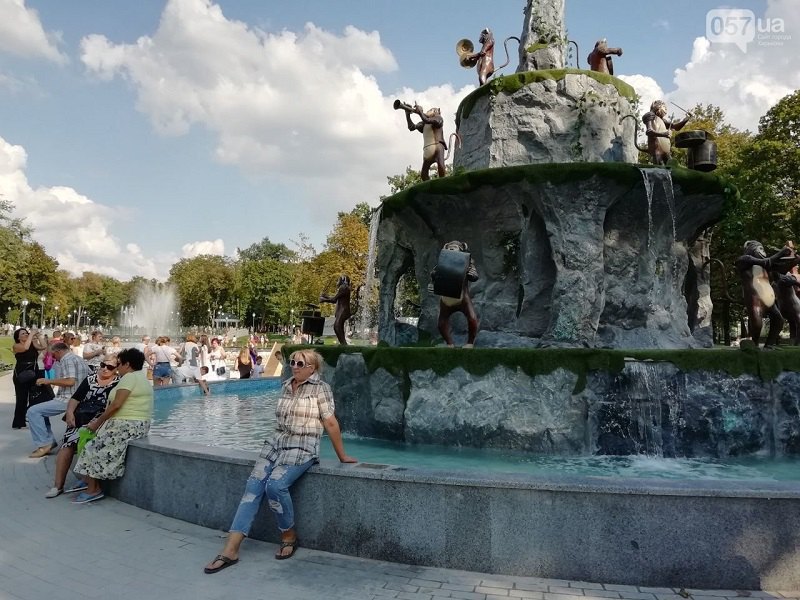
And what should they compare these monkeys to? Are there any successful sculptures in public space in Kharkiv, in your opinion?
Oh, you're touching on such a topic that I don't even know where to start. Well, for example, we have one monument that is completely ideologically unbiased - the fountain "Kiss". I can't say that I really like the way it's sculpted - there are such skinny figures, they're called dystrophs in Kharkiv, but it's a pretty normal sculpture in the city. But there are models of Kharkiv buildings in glass cubes of dubious quality around the perimeter - I don't know why they were added there.
There is a good monument to the dead teachers and students of the university. It's Soviet, mundane, but very well made. It is dedicated to ordinary people who died for Kharkiv, for Ukraine.
There was a monument to the ten years of independence with an eagle on top, it was funny, and unfortunately, it was demolished. It could have been even better, but its author told me that Kushnarev (the head of the Kharkiv Regional State Administration in 2001, when the monument was erected - Ed.) came and said that they should put a girl with ears of grain at the bottom. And the author could not refuse.
But mostly, Kharkiv residents see only the terrible and the conscientious. Take the monument to Gurchenko - a talented Kharkiv woman, why make such a monstrosity?
Or the new monument to the dead children.
It's really scary. A group of deputies staged it, though for private money.
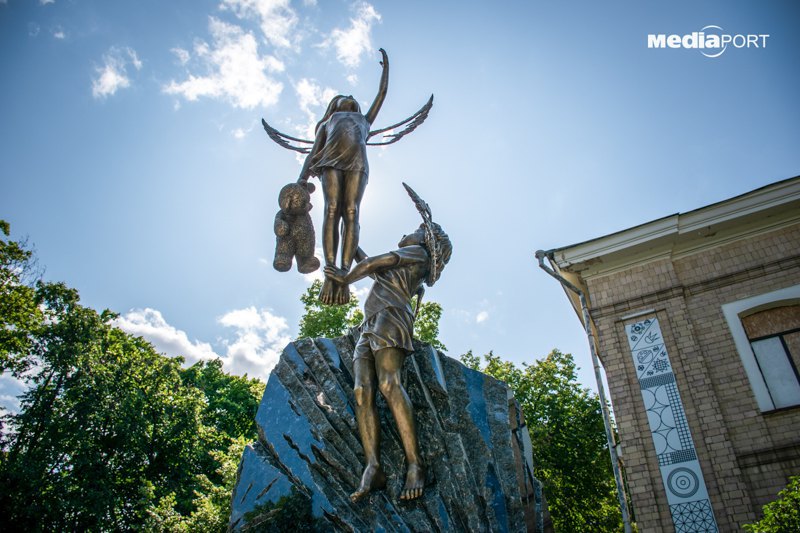
The money is private, but the space is public.
Yes. And this is the aesthetics of the tombstones that were put up by pansies in the 1990s. And it's also an aesthetic landing in the future - this is how we will be remembered in 30-40 years. Even the Soviet government was smart enough to commission monuments from professionals. Having lived in Kharkiv all my life, I don't know who made this monstrosity. I can imagine that a monument to Oleksandr Sukholit would have been commissioned on this theme - he would have created a gem that the city could have been proud of for years.
There is a problem with public sculpture: it always depends on those in power, it is a marker of their tastes. They are the ones who give permission. And the tastes of our country's rulers are based on pop. This is an objective reality. For example, during our independence, we did not have a radio station dedicated to classical music for many years. This is a telling marker.
We generally have this problem, which Zabuzhko described very well in Notre Dame d'Ukraine: we never had our own aristocracy, because there were Lithuania, Poland, Hungary, Russia, and the aristocracy that emerged was simply absorbed by the neighbouring empires. This is how our history developed. This is where we have all these problems of the tastes of the peasant nation. They shouldn't be denied, they shouldn't be hidden from - they should be recognised and solved.
It seems to me that such decisions of the authorities are not only out of bad taste, they are also populism. They put up sculptures that they think will appeal to the people.
Of course. Yes, it is populism. To be fair, the Kharkiv authorities are doing well with populism. Even now, during the war, Kharkiv remains a very clean city - this is a feature of the authorities that people like very much. In the centre of the park, everything is paved with granite, it now resembles a cemetery, but everything is clean and tidy. This inspires people's trust, and it extends to the monuments that the authorities erect. And to those that are removed.
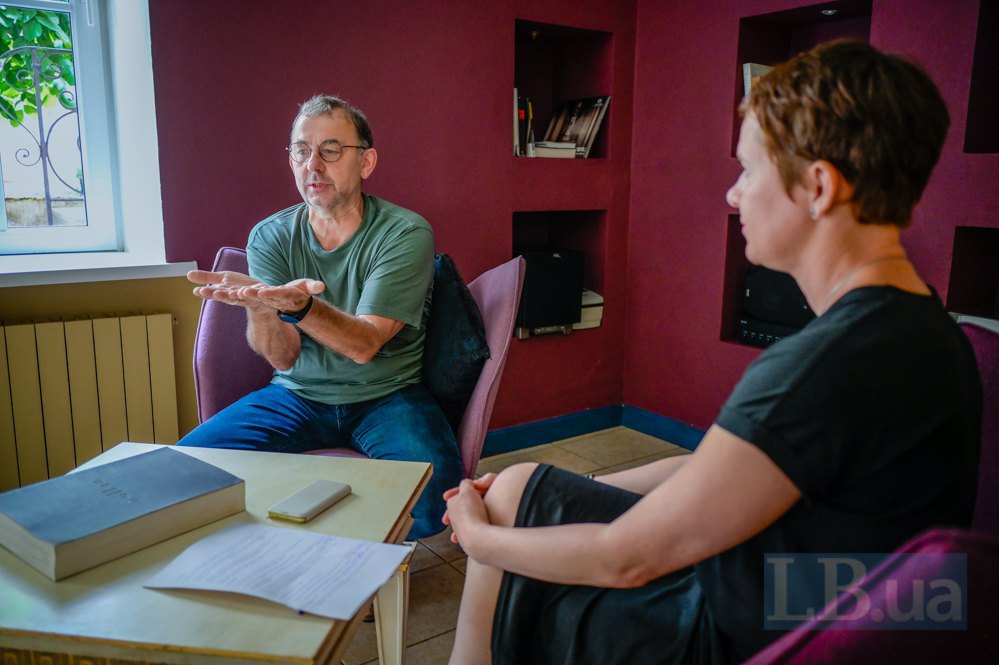
Although if I were to demolish monuments on the principle of imperial markers, in Kharkiv I would start with the monument to Shevchenko. Because the interpretation of Shevchenko in this monument is not just imperial, but Soviet-imperial. Who occupies the leading place in this sculptural group? A Red Army soldier with a rifle - the one who did not let people out of starving villages in the 1930s. This is how Shevchenko's work is interpreted. Although the monument itself is aesthetically pleasing, Manizer was a good sculptor, and he was a three-time winner of the Stalin Prize. In 1937, he took a leadership position in the Union of Artists (chairman of the board of the Leningrad branch of the RSFSR Union of Artists - Ed.) - at a time when all normal people were being shot. But the point is not even in the author, but in this interpretation of Shevchenko - if you compare, that small monument to Pushkin means nothing.
I'm not even talking about the soldier on Pavlov Field. I have a studio next to it, and I pass it every day. It's scary and conscientious. But our Ukrainian flag is now hanging on it, and I am sure that this monument will remain with us. Although, in my opinion, it should be removed.
"We cannot talk to the world only through Prymachenko. With this approach, we emphasise the main thesis of Russian propaganda - that we are a 'peasant nation with no high culture'"
All right, let's demolish the soldier, but what should we put in his place? It's easy to demolish now, but I don't see any alternative proposals for understanding space.
I completely agree with you. When you demolish something, you have to immediately offer something else.
If you look at it from a broader perspective, I don't see any point in kenselling at all. This is our private trauma, which is of no interest to anyone but us. And, to tell the truth, Russian culture has already lost. It has failed to educate its society, failed to cope with its main task.
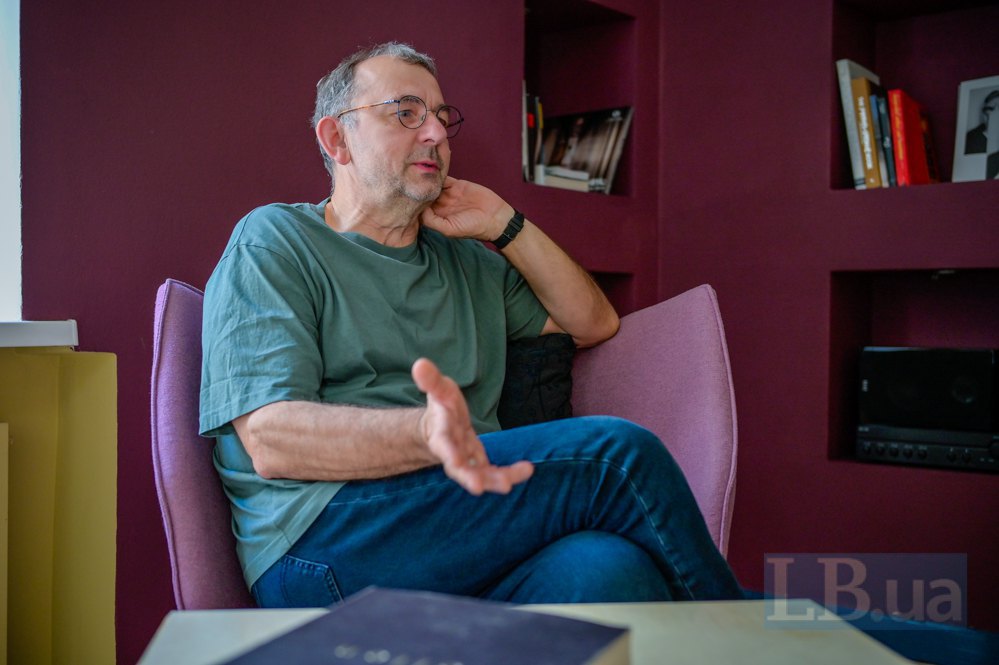
But Russian culture has done an excellent job of exporting culture.
Yes, it's just wow, how well it has done. Russian culture has already become part of European identity, and there is nothing we can do about it. Europeans have taken the best of it and ignore everything else; they ignore Dostoevsky's Russian World, the idea that it is superior to all Christian worlds, but they have taken Beauty Will Save the World and are now discussing it endlessly. And when we try to take it away from them, we just look ridiculous to them.
That's why we need to promote what we have, we need to invest in it, to educate, for example, Ukrainian translators abroad. Why is Russian culture and literature so well known in the world? Because it is well translated, and huge resources have been invested in it. And what have we done in the 30 years of independence? Not much at all.
But the situation is changing. We now have the Ukrainian Institute, a separate prize for translators into Ukrainian...
This is all right and very good. Yes, the situation has changed for the better. But there is still a lot to be done. We all want the war to end, but we need to understand that this will only be a condition for building Ukraine, not the building itself.
For many years, you have been working with the topic of Ukraine through the image of Utopia, a place that is absent. Do you feel that now Ukraine is ceasing to be a Utopia and is becoming visible?
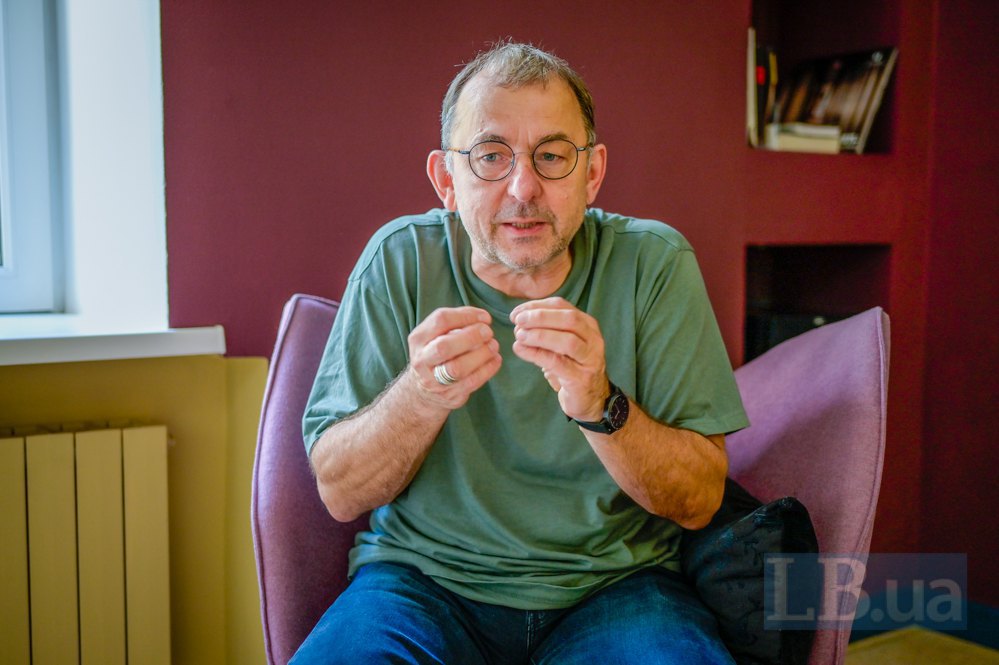
In Soviet times, Kharkiv was known for strange things. For example, in the 1960s, the first poetry bookshop appeared in Kharkiv - not in Kyiv or Moscow. It was called Poetry. And the square where it was located was called Poetry Square. Pushkin stood there, and Gogol stood opposite. During the period of independent Ukraine, it was closed, although no one was at war with Russian poetry at that time. But this is also an indicator, it means that no one needs poetry.
Now, on the contrary, bookstores are opening.
There is even a kind of boom in bookstores. But this is situational. There should be some kind of sustainable cultural policy designed for centuries. It should also be outward-looking. I get furious when I hear people complain that Ukrainians abroad speak Russian when they should speak Ukrainian. People! You have to speak the language of the country you live in! Or at least international English, and at a decent level! This is the only way to tell someone abroad who we are.
They know very little about us. And even what they do know is not always connected to us. For example: Kharkiv is the city where a wonderful artist Vasyl Yermilov lived and worked. But the only thing that reminds us of him is the Yermilov Centre. But we could renovate his studio on Poltavskyy Shlyakh and turn it into a museum - it was once an important point of cultural resistance in Kharkiv.
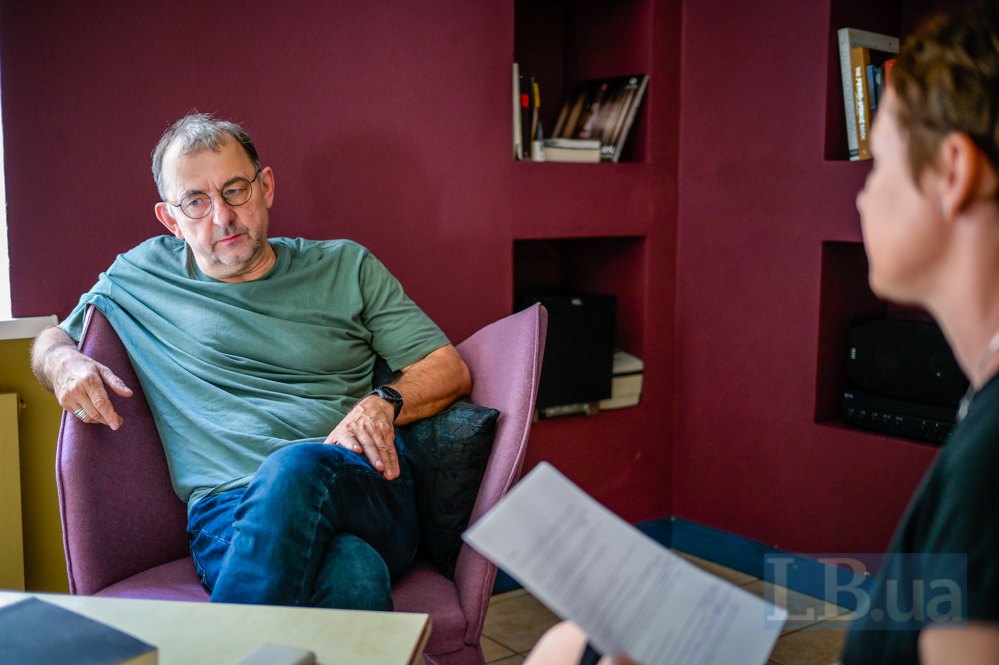
Borys Mykhaylov lived and worked in Kharkiv - he is the most famous Ukrainian artist in the world, but for some reason we don't have a museum of his work.
The museum of the Kharkiv School of Photography was supposed to open, but it didn't make it before the invasion. However, this is a private initiative.
That's it. Imagine if there was a large state museum of the Kharkiv School of Photography in Kharkiv. It's very famous in the art world, and now we could say: look, the city where all these works, all these people are being bombed... Serhiy Solonskyy, by the way, is still in Kharkiv, in Saltovka... This is the city where the Yermilov and Mykhaylov Museum is! Everyone knows these artists, but they seem to have nothing to do with Kharkiv.
These are the things that make up the image of a city. And the image of the whole country is made up of the image of cities. However, the authorities do not want this, they do not understand Mykhaylov. His works are in the best museums in the world, and we still have the director of the Kharkiv Art Museum who closed his exhibition in 2006 or 2005 because she found it obscene. Now Ivan Marchuk is going to have a museum in our country, and the decree has already been signed - but this artist does not define the scene of contemporary Ukrainian art in any way. His works are not in any serious international collections, but a British newspaper once included him in a list of "geniuses" and it started to happen. This is the level of understanding of culture by the authorities.
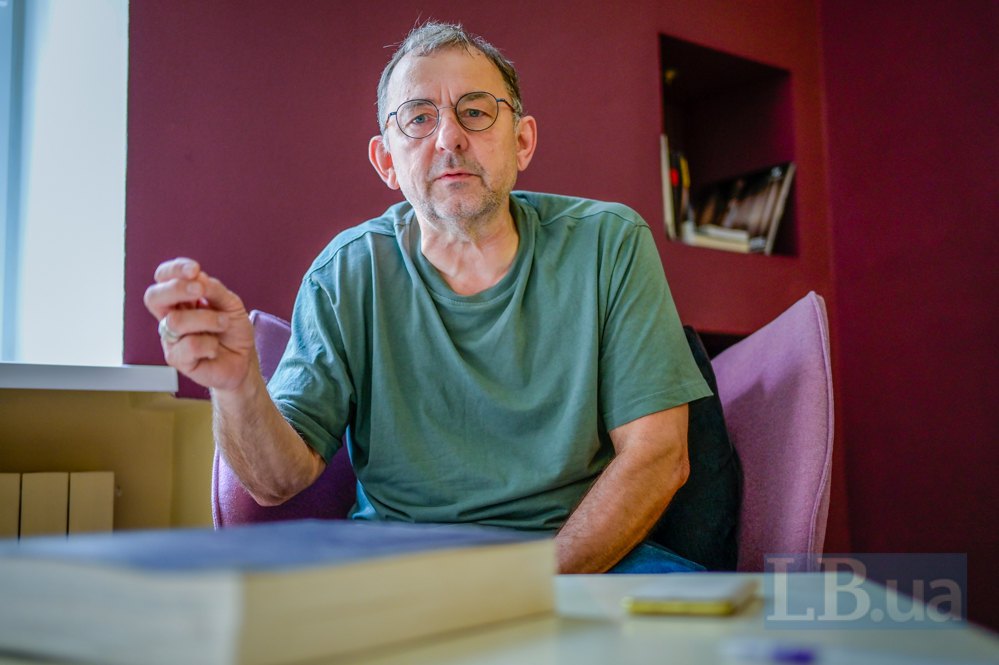
"The most important and difficult thing will start after the victory. And I have no doubt that we will win"
Identity is also about memory and tradition...
...and this is also a problem for us. Over the past few months, I've had a few shocks. I saw Horska's work at the exhibition for the first time - and this is me, a professional! I've been swimming in this ocean of art all my life! And then I saw the works of Alina Lamakh - I had never seen them either. Do you understand?
I remember another example - there is a young colleague who works with tin soldiers (Oleh Kalashnik - Ed.), and 15 years ago I worked with them, with almost the same images. And I am in no way accusing him of plagiarism, he just didn't know about it. Because where could he see it? We still don't have a museum of contemporary art. And this is also learning, the transfer of experience. And for people who are not professionally connected with art, it is an opportunity to comprehend their identity.
Do you remember in 2015, when the National Art Museum opened the Special Fund project? I remember very well what Rojtburd said about it: if we had seen these works in our time, we would have grown up to be different artists.
Absolutely right! It's true! When I first went to a large Western museum and was able to see the art that was not coming to us, I was already more than 30 years old. I was already an established person, and all this did not affect me anymore, except for some individual details. But if I had seen it when I was 16 or 18, I would have been completely different.

But both Western art and our forbidden art were hidden from us by the bad Soviet government. But your art seems to be no longer hidden - but young artists still don't have the opportunity to explore it in full. Where can we see your works all the time?
Only in my studio. Once, back in Soviet times, my works were bought by the Sumy Museum - they have a collection of young Savadov, young Rojtburd, young Geyko... The museum staff participated in Sedniv as art critics and then bought our works. Now there is no such thing. There is an attempt to make a museum of contemporary art that does not come from the state, and I believe that this strong team will succeed, that they will eventually make it. They have an interesting concept with a horizontal structure, not just a museum as a building in the centre of Kyiv. And then, perhaps, there will be more public presence for my work as well.
I've been a freelancer all my life, but now I would love to take a course, communicate with students, do practical work with them. I have a lot to tell these young people, and I also have a lot to learn from them.
Would you agree to do something for Kharkiv's public space if you were offered?
Well, you see, they are already persuading me to install the Fountain of Exhaustion. The Litmuseum is doing this, they've even gone with an architect to look for a place to install it. We'll see. It's a complicated construction, it will need to be maintained and cleaned periodically. There is a threat that the watering cans could be vandalised - they are bronze, "non-ferrous metal". To prevent vandalism, we could hang it on a firewall, so it would work like a fountain in the rain.
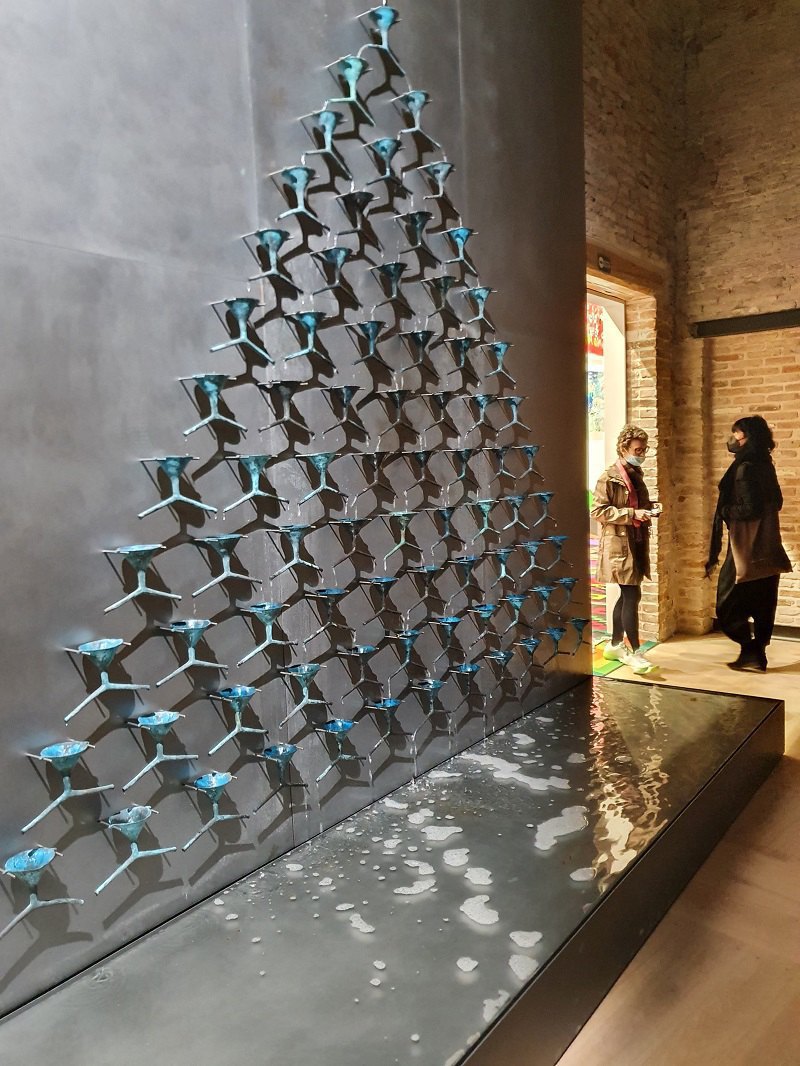
So I don't mind putting up my "Fountain", and not because I want to be distinguished somehow - no, my ego is already quite satisfied with awards and exhibitions. I want to do this for Kharkiv, and I don't need any fees - just money for production. I'm ready to make new watering cans - probably larger ones, I'll make everything new for free, you just hang it up. We'll see if something comes of it.
Is there a version of the Fountain on exhibition in Kharkiv?
Yes, there is. Another version is in Vienna, where it will be until October. My other works are currently on display in an exhibition that is travelling around Italy; there is a work in Lviv, in the Jam Factory - I am very proud to participate in this exhibition, it is a great honour for me to hang next to Bilokur and Lamakh. Right now there is an exhibition in Kyiv, at Dukat, and in Kharkiv, at the Yermilov Centre.

When this Kharkiv exhibition was being organised, I turned to private collectors to provide my works. And I am very grateful to them that they did not refuse, even though we all know what the situation is like there. At the opening, I was moved to tears - I have never had so many people, from young to old, at any opening, as I did under the shelling in Kharkiv. I realise that this is not about me, that this is not an artistic but a social event. And it is very important that all these people came.
I am not a pessimist. I believe in the best. Everything will happen - the only thing is that you have to work hard, always remember that the most important and difficult thing will start after the victory. And I have no doubt that we will win. We have only two options: to win or to disappear. There is no third option.
